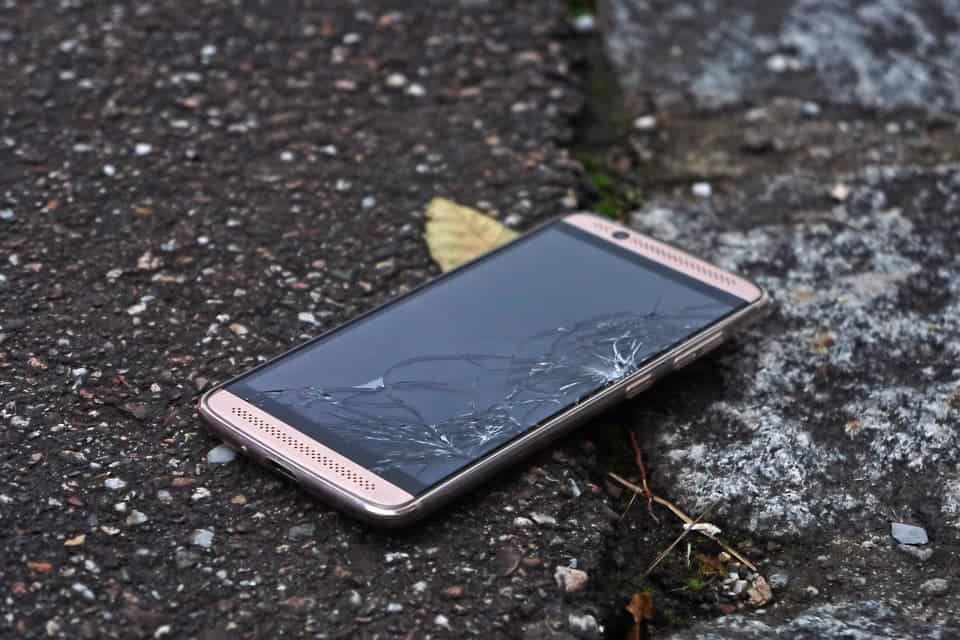An international research effort could finally deliver on your most ardent prayer: unbreakable smartphone glass.

You wouldn’t know by the looks of it, but certain kinds of glass are actually pretty similar in composition to Earth’s most common type of magma: alumino-silicate melts. A new study, led by researchers from The Australian National University (ANU) and the Institut de Physique du Globe de Paris in France, used experimental methods and computer modeling to better understand the interplay between chemical composition, nano-structure, and physical properties of such melts.
This information will help geoscientists better understand the processes that drive deep-seated geological properties, such as underground melt mobility and how it affects tectonic plate buoyancy. Top-side, the data provides a foundation for creating better classes of technical glass — which means your phone is about to get an upgrade! Soon-ish.
The faults in our glass
“Everyone knows how frustrating it is when you drop your mobile device and get a large crack in the screen,” said lead author of the study, Dr Le Losq from the ANU Research School of Earth Sciences.
Glasses, every budding geologist is told, are amorphous in structure. In other words, the tiny bits that come together to form glass-like materials don’t create orderly structures like they try to do in other rocks, and instead bunch up rather chaotically. But, according to Le Losq, this doesn’t hold true at the atomic level. When talking about individual atoms and groups of atoms, glasses are actually quite neatly ordered substances.
In silicate (SiO4, basically sand) systems, such as the glass in your windows, metal ions tend to cluster together into a partially-broken network of ‘percolation channels’. Percolation is a term that describes the movement of a liquid slowly passing through a filter, like what happens in a coffee filter. These channels arrange themselves in an orderly fashion close to the corners of silicate crystals, which tend to be tetrahedral (a triangular pyramid) to compensate for local electrical imbalances in the structures.
The team focused their work on a similar class of substances, dubbed alumino-silicate glasses (and melts). These encompass the majority of Earth-borne magmas (since silica and aluminum are found in ample supply here) and a wide range of technical glasses, used extensively in industrial applications.
Though widely used, it was unknown if aluminum ions performed the same task of charge compensation at the corners of silica tetrahedrons. To answer this question, the researchers first measured the viscosity of molten glass at more than 1,000 degrees Celsius and the density of the glass after it had cooled and formed. Using different imaging and analysis techniques, including nMRI analysis and molecular dynamics simulations, the team demonstrated that the aluminum ions do spread out in percolation channels, making this a “universal phenomenon of oxide glasses and melts”.
Oceans and screens
This all probably sounds like a heaping of technical mumbo-jumbo. So how does this translate into better phone screens?
Well, knowing exactly how a substance behaves at the atomic level, as well as knowing how the matter therein organizes itself and interacts, allows researchers to tweak these substances, greatly improving their properties on our scale of reference. For example, pound for pound, the strongest material on Earth is graphene. Graphene consists of atom-thick sheets of carbon, and it’s not a natural material — it’s produced in a lab. In other words, atomic-level tweaking allowed researchers to turn what is essentially just soot into the strongest material on the planet.
Similarly, understanding the atomic workings of glass and melts gives us a lot of room to tweak, edit, and improve them. For now, the paper analyzes the effect of different elements in the glasses, describing how larger atoms remain wedged in the percolation channels, pushing the silica tetrahedrons apart and causing localized faults in the glass. Taking care to remove such impurities during the production of glass should help create stronger materials that are less likely to break or shatter. The paper also analyzes the effects of different elements on the melt’s overall viscosity, potentially allowing for better-flowing glass products that can take on a wider range of shapes. These areas are bound to see more research in the future, as we’re all aware of how sought-after shatter-proof glass would be, especially for those with clumsy fingers.
Until then, the findings help further our understanding of how magma behaves in the high-pressure, high-temperature conditions below the crust. This fits into the wider picture of the influence it played in the geological evolution of Earth, from shaping volcanism to maintaining the buoyancy of tectonic plates.
“Our research findings allow better modelling of present volcanic activity, as well as of the lavas involved in the original formation of Earth and its surface,” Dr Le Losq said.
He said the research could also indicate methods of producing glass suitable for storing nuclear waste more effectively than currently available.
The paper “Percolation channels: a universal idea to describe the atomic structure and dynamics of glasses and melts” has been published in the journal Scientific Reports.


